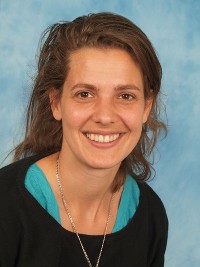Ecosystem-based fisheries management of cod and sprat in the Baltic Sea
Introduction
The fishing industry prefers to target large predatory fish, such as cod, as these often are the most profitable. These predatory fish depend on smaller fish, such as sprat, for their survival and growth. Typically, these prey fish are also subject to fishing. Even though it has become widely recognized that fisheries management should account for trophic interactions and multiple impacts in fishery systems [1], fisheries advice still mainly relies on classic, single-species maximum sustainable yield analysis. It is proving difficult to operationalize a multi-species approach, as classic fisheries models are missing some essential biological mechanisms and lack the power to handle this kind of complexity [2]. This hinders the reliability of predictions of the effects of fishing and the establishment of optimal exploitation targets in systems of interrelated stocks. Thus, to account for feedbacks between a predator and its prey, growth and reproduction need to be analyzed as the food-dependent processes that they are. Furthermore, seasonal rhythms, especially in the reproductive output of fish stocks, need to be taken into account, as seasonal variation in prey availability strongly affects the predator, feeding back on the prey. The aim of this project is to examine these two extensions to elucidate how the fishing of cod and sprat affects the Baltic Sea ecosystem.
Methodology
To analyze the effect of fishing on both Baltic cod and sprat, I use an extended version of the stage-structured biomass model for the cod-sprat interaction in the Baltic Sea developed by [3]. My model incorporates food-dependent growth and maturation and food-dependent seasonal reproduction. The size-based predatory interactions between cod and sprat and fisheries scenarios were derived from field and fisheries data from the Baltic Sea.
Results
Fishing on the prey fish, sprat, increases the resilience of the predator, cod, to fishing. This happens as through the food-dependent processes in the fish population, competition for food occurs. Fishing on the prey increases the food availability in the prey population, thereby changing the size-distribution of the prey through an increase in reproduction. As a result, fishing on the prey actually increases the food availability of the predator. In addition, fishing on the prey decreases the potential for collapse of the predator population. These findings are independent of the seasonal pattern of reproduction.
Conclusions
In contrast with the single- and multi-species advice issued by the International Council for the Exploration of the Sea (ICES), my results indicate that increasing the fishing pressure on the prey might benefit, rather than always harm, the predator. In addition, a single-species approach predicts different fishing pressures to obtain the maximum sustainable yield (FMSYs) than a multi-species approach, while using “classic fisheries models” a single- and multi-species approach predict similar values for the FMSYs.
References
[1] Walters C, Christensen V, Martell S & Kitchell J (2005). Possible ecosystem impacts of applying MSY policies from single-species assessment. ICES Journal of Marine Science 62,558–568.
[2] Persson L, Van Leeuwen A, de Roos AM (2014). The ecological foundation for ecosystem-based management of fisheries: Mechanistic linkages between the individual-, population-, and community-level dynamics. ICES Journal of Marine Science doi:10.1093/icesjms/fst231.
[3] Van Leeuwen A, de Roos AM & Persson L 2008. How cod shapes its world. Journal of Sea Research 60, 89–104.
Supervisor
Ulf Dieckmann, Evolution and Ecology, IIASA
Note
Floor Soudijn of the University of Amsterdam/Institute, Netherlands, is a citizen of the Netherlands. She was funded by IIASA’s National Member Organization for the Netherlands and worked in the Evolution and Ecology Program (EEP) during the YSSP.
Please note these Proceedings have received limited or no review from supervisors and IIASA program directors, and the views and results expressed therein do not necessarily represent IIASA, its National Member Organizations, or other organizations supporting the work.
Further information


